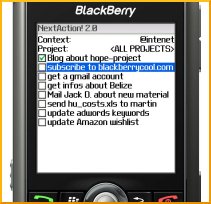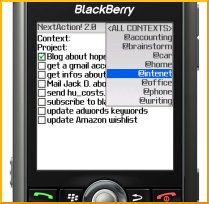 A friend of mine pointed out a very cool Firefox add-in called MeeTimer that I really think is a good idea. If you've ever spent waaay too much time on YouTube after someone sent you a link to a video, you should check this out. Same goes for getting sucked into web "research" that causes hours to go by without you noticing.
A friend of mine pointed out a very cool Firefox add-in called MeeTimer that I really think is a good idea. If you've ever spent waaay too much time on YouTube after someone sent you a link to a video, you should check this out. Same goes for getting sucked into web "research" that causes hours to go by without you noticing.
What's MeeTime do? Well, I think they describe it pretty well on their site:
| "MeeTimer has a simple role: it records where you spend your time online. It does it in a rather useful way, by allowing you to group websites into activities (e.g. Facebook = procrastination; Gmail = communication) so you can make sense of where your time is going. Finally, it accumulates time spent on a site over the course of a day, so when you think "just another 2 mins won't hurt" you realise that actually, yes, it will ;)" |
Meetimer provides some easy-to-understand reporting to make it easy to tell what's sucking your time online, and they provide some good tips for reducing procrastination online.
And, if reporting isn't enough for you, you can configure MeeTimer to popup a warning dialog when you spend too much time on a particular site.
Like most Firefox add-ins it's free, though the author does accept donations if you find that this tool is useful (and you probably will). If you're a Firefox user and want to reduce the time you waste online, install MeeTimer right now.
Read More

 Am I getting a cosmic nudge? I am in the midst of reading a great book called "
Am I getting a cosmic nudge? I am in the midst of reading a great book called " At its simplest, time boxing is the technique of declaring a finite time period to work on a task or project, then getting as much focused work done toward the task or project during that finite period of time. In essence, "I'm going to do as much work as I can on project x during the next 30 minutes," then stopping work when that 30 minutes is up.
At its simplest, time boxing is the technique of declaring a finite time period to work on a task or project, then getting as much focused work done toward the task or project during that finite period of time. In essence, "I'm going to do as much work as I can on project x during the next 30 minutes," then stopping work when that 30 minutes is up. Why not move to an MBO-like model for your personal development? It's easy - at the beginning of a quarter, get into the habit of stepping back and contemplating what you want to get done during the next quarter.
Why not move to an MBO-like model for your personal development? It's easy - at the beginning of a quarter, get into the habit of stepping back and contemplating what you want to get done during the next quarter. I have been spending time with version 2 of
I have been spending time with version 2 of  Why do you need a better way to manage tasks on Blackberry? The Blackberry's built-in task application is woefully inadequate. It does a poor job with categories, has a cumbersome interface, and offers very little in the way of filtering.
Why do you need a better way to manage tasks on Blackberry? The Blackberry's built-in task application is woefully inadequate. It does a poor job with categories, has a cumbersome interface, and offers very little in the way of filtering.